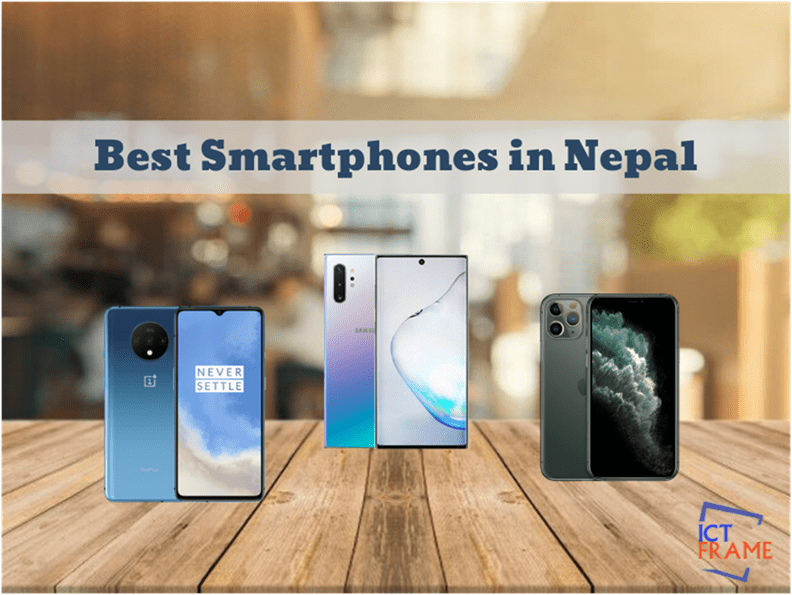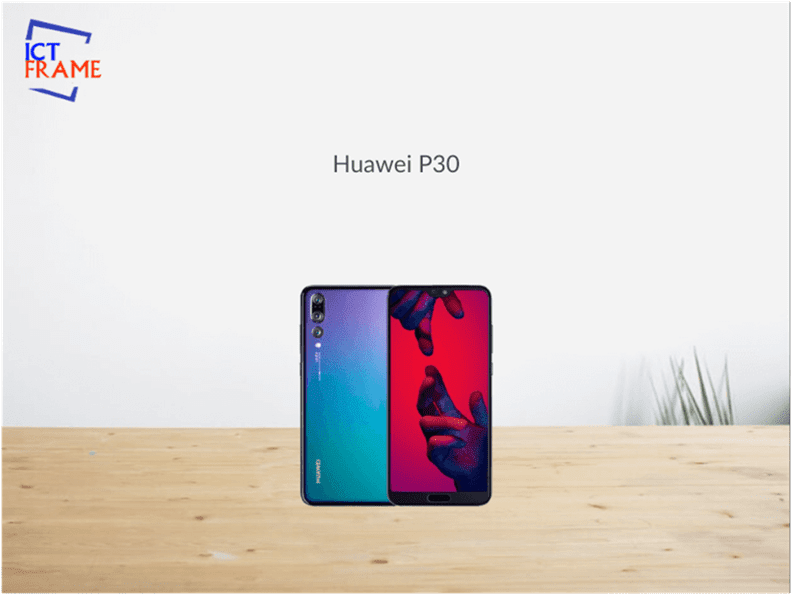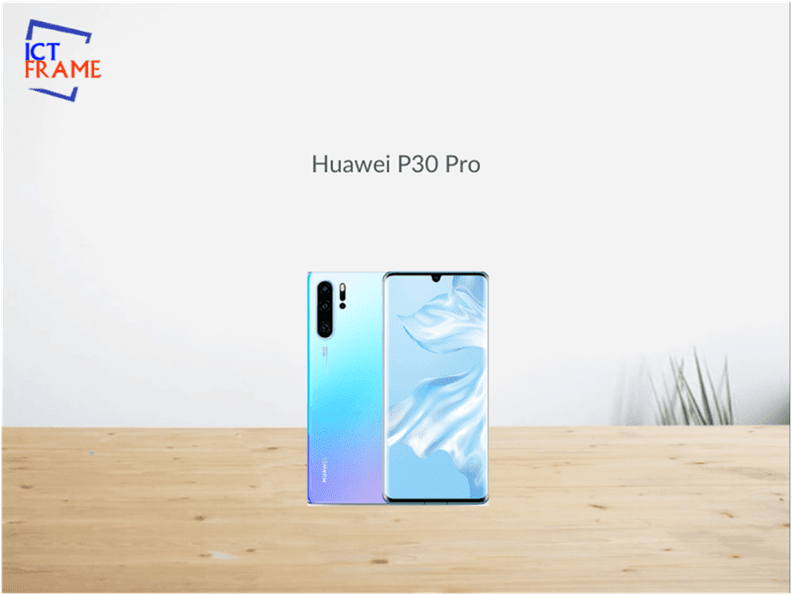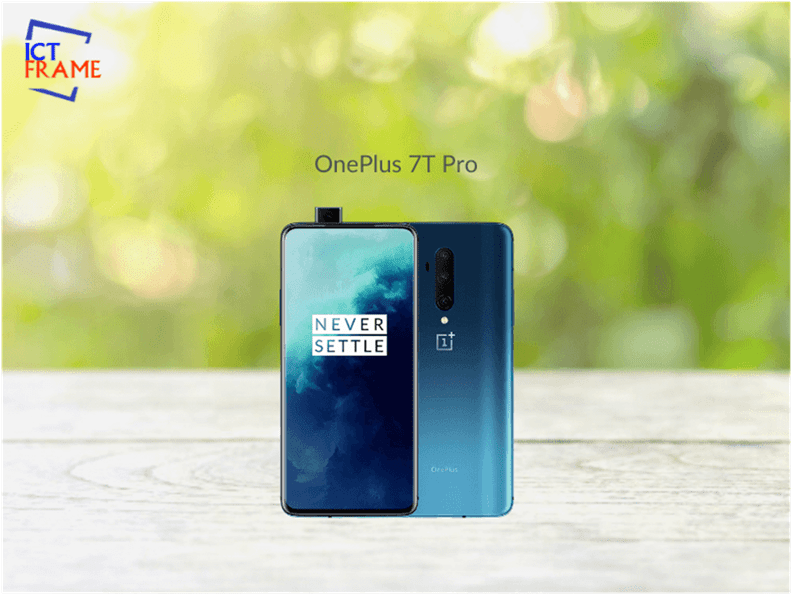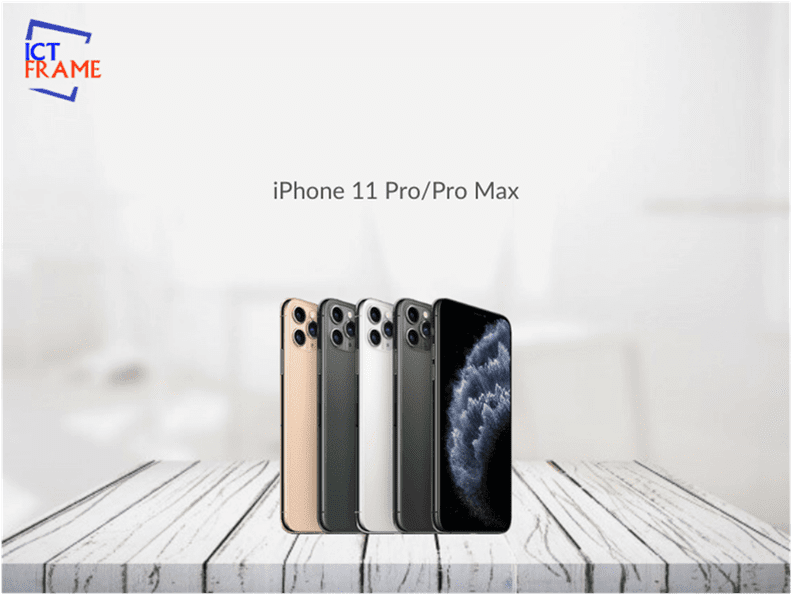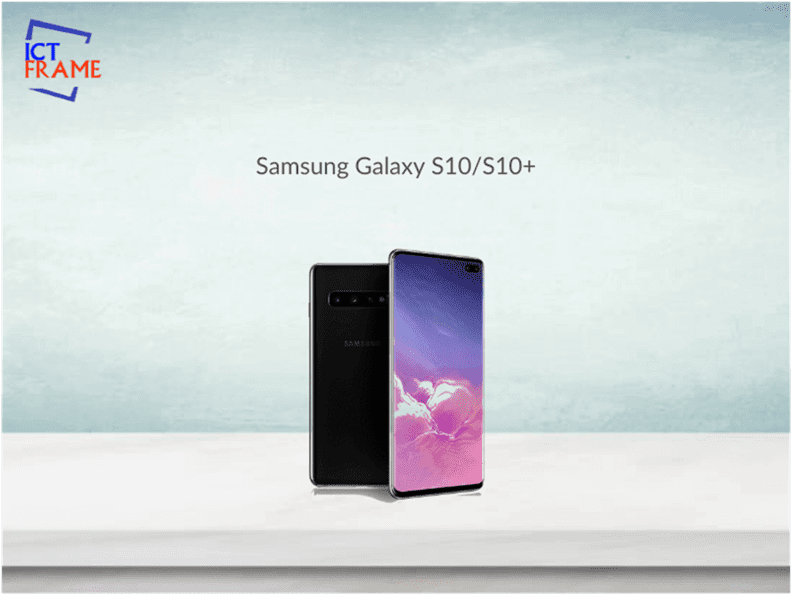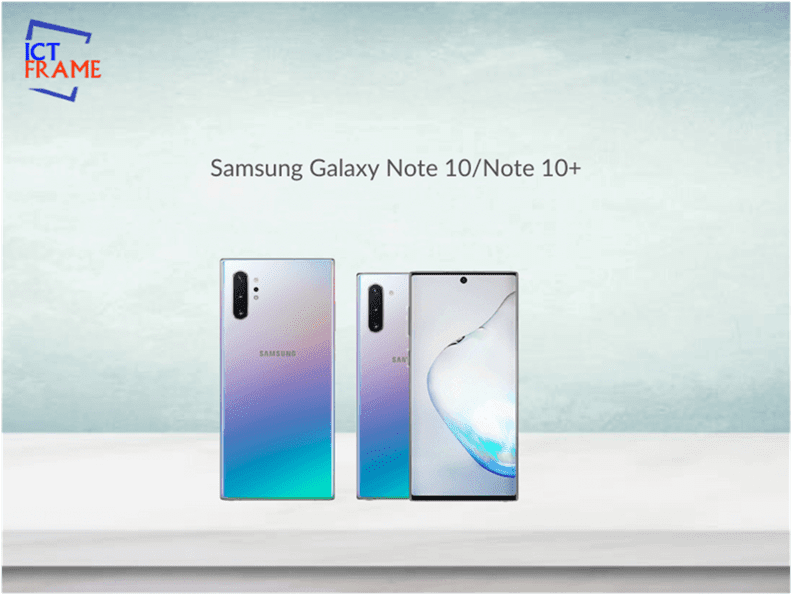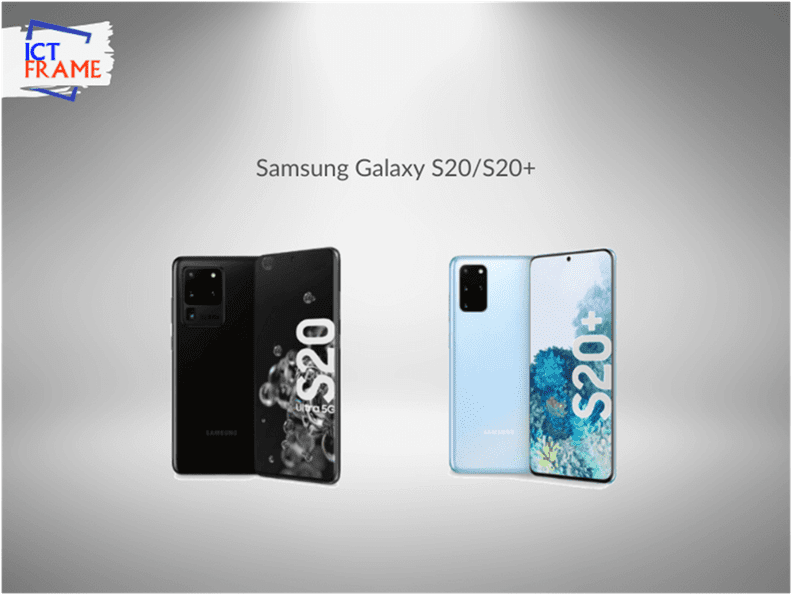Best Flagship Smartphones To Buy in Nepal [June 2020]
October 3rd, 2019, Kathmandu
Your smartphone is your most valuable possession. The Nepali market offers numerous variations of smartphones making it difficult to make a choice. Choosing the best phones in Nepal depends on the specs and price range.
A few years ago, there were only selective mobile phones with high-end features and a massive price tag. The times have changed now. The official distributors of all the major brands (except Google) give us the latest at the best price for their product.
Among the best flagship smartphones in Nepal, we have made a list of the best smartphones of top brands. The price range justifies the specs and functions of these mobile phones. So why don’t we have a look at the list and we hope it helps you buy the best one for yourself.
5. Xiaomi Flagship Smartphones in Nepal
The Chinese giants, Xiaomi, have low price tags but amazing specs on their phones. So, you probably will get more than you pay sometimes with your new Xiaomi smartphone. The company markets its phones under three brand names: Mi, Redmi and Pocophone.
Mi is the mid-range brand while Redmi and Pocophone are the budget series of Xiaomi. In 2018, Pocophone F1 was popular in the market with its flagship specs and budget-friendly price. In August 2019, Xiaomi launched Redmi K20 Pro with the same formula.
Redmi K20 Pro
Let’s begin with the fact that Xiaomi fixed the uninspiring design that people talked about Poco F1. The Redmi K20 Pro has a fresh and well-thought design. Moreover, the reviews conclude that it is certainly not overpriced, making it a perfect budget flagship smartphone in Nepal. And, if you hear someone say Mi 9T Pro, then don’t get confused. It’s the same thing!
This smartphone has a glass-metal construction and a metal side rail holds the front and rear glass firmly. The 3D curved design attached with Gorilla Glass 5 layer gives it a more distinctive look and protection. Despite the amazingly attractive glass design, it’s a shame that you have to use a phone case. We actually would recommend using one to avoid smudges and scratches.
The display is amazing on the front with the 6.39 inches AMOLED screen. There is an under-display fingerprint scanner that unlocks the device quickly. We bet you already want to know where the selfie camera is! Well, it’s the same as the OnePlus 7 Pro and Vivo V15 Pro – motorized pop-up module for the selfie-camera. You will find a triple rear camera on the back: a wide-angle, an ultra-wide lens, and a telephoto lens. The 48MP primary sensor is highlighted by an accent color ring.
Now, talking about the buttons, both volume rocker and power buttons are metallic, giving brilliant tactile feedback. Furthermore, the red highlight on the power key also adds to its overall appeal.
The Redmi K20 features Snapdragon 855 chipset with 8GB RAM and 256GB of storage alongside. It has also got a 4000mAh battery that comes with a 27W fast charger. Such a competent hardware combo will easily give you the best graphics experience with any sort of apps and games you download on it.
Cons:
- No IP rating for water or dust resistance
- Average low light performance and No OIS (Optical Image Stabilization)
- Lacks stereo speakers (has mono speakers)
- Camera not up to the mark as flagships of Samsung and Apple
Redmi K20 Pro Specifications:
- Display: 6.39-inch Super AMOLED display with Corning Gorilla Glass 5 protection
- Resolution: Full-HD+ (2340×1080 pixels), 19.5:9 aspect ratio
- Chipset: Qualcomm Snapdragon 855
- CPU: Octa-core (1×2.84 GHz Kryo 485 & 3×2.42 GHz Kryo 485 & 4×1.8 GHz Kryo 485)
- GPU: Adreno 640
- RAM: 8GB
- Storage: 256GB; No SD Card slot for memory expansion
- OS & UI: Android Pie (v9.0) with MIUI 10 on the top
- Rear Camera: (48 MP f/1.8, wide-angle camera) + (8MP, f/2.4, telephoto camera, 2x optical zoom) + (13MP, f/2.4, ultra-wide-angle camera), Dual-LED flash
- Front Camera: 20MP motorized pop-up selfie camera, f/2.2
- Battery: 4000mAh Battery with 27-watt fast charging support
- Sensors: Fingerprint (under-display, optical), accelerometer, gyro, proximity, compass
Redmi K20 Pro Price in Nepal (8/256GB): Rs. 46,999
4. Huawei Flagship Smartphones in Nepal
Whether you are eyeing for a flagship or cheap smartphone, there’s a Huawei phone for every budget. The market of Huawei smartphones has been on an impressive rise as it surpassed Apple as the world’s second best-selling smartphone in 2019.
However, things started going south for Huawei when the US imposed a ban on trade between Huawei and any American company. As a result, Google had to cease trade with Huawei which means, no Google Play on these Chinese smartphones. Although, Huawei does offer its alternative store, App Gallery, which is pale in comparison to Google’s choices. But, there’s good news for Huawei users who have Google Play services (before the ban). The phones will continue to get access to security updates, Google apps, and services.
Note: Due to the US blocklist, we didn’t add the Mate 30 Pro, which could have easily made it on this list of the best flagship smartphone to buy in Nepal.
Let’s take a look at Huawei’s best phones in Nepal to eye for in 2020.
Huawei P30
Huawei has done a remarkable job of improving the design of the P30 series as compared to the P20 and P20 pro. The P30 and P30 Pro share several features but have a few distinctive differences as well. Basically, Huawei P30 is the sibling or P30 Pro and both have the same internals.
This smartphone is all about the camera. Huawei has done its best with low light and long-distance shots with a combination of three great lenses and some software tricks. In fact, not even Google’s Pixel phones would be able to match up with them. The front houses a 32MP selfie camera and an optical under-display fingerprint scanner.
The display is the same as P20 Pro – a 6.1inch OLED screen with a resolution of 2340×1080. It is a significant jump over regular HD but still can’t compete with Samsung’s latest 4K display. The smartphone has IP53 protection – limited dust and water splash protection). This means you’re good as long as you don’t put it underwater. Talking about the internal, you’ll find that the smartphone uses Kirin 980 (same as Huawei’s Mate 20). The functions are fast enough with 6GB RAM and 128GB storage.
Note: P30 supports full access to Google apps, services, and security updates as it was announced before the US trade blocklist.
Cons
- One of the worst camera bumps in a smartphone
- Lacks the IR Blaster (which P30 Pro has)
- Has mono speakers at the bottom (which is behind the stereo speakers of other flagships on our list)
Huawei P30 Pro
Now, let’s talk about Huawei’s first flagship of 2019 – the P30 Pro. It is certainly a bigger and better version of the P30 with innovative features. It comes with a large 6.47 inch OLED display. Moreover, the optical in-display fingerprint scanner is one of the fastest around.
The outstanding camera adds to the top-notch design and display of Huawei P30 Pro. It is powered by HiSilicon Kirin 980 chipset and aided by 8GB RAM. The internal does justice to the speed and graphics of P30 Pro. And, we mean no lags or glitches anywhere even with multitasking. To support its tasks, it has a huge 4200mAh battery with 40W fast charging support.
An interesting thing to note about this smartphone is that the absence of the earpiece goes unnoticeable. It has something called Electromagnetic Levitation which makes the Pro look cleaner but doesn’t necessarily separate the call quality from P30. By the way, the Pro is IP68 rated, which means you can dip it in the water with no damage to the smartphone.
Unlike its sibling, P30 Pro comes with a quad-camera setup. It has a 40-megapixel SuperSpectrum sensor, a 20MP ultra-wide-angle camera, an 8MP periscope telephoto lens, and a TOF (Time-of-Flight) sensor. The selfie camera is a 32MP with f/2.0 aperture. These reasons have made it possible for the P30 Pro to rank higher on our list of the best smartphones in Nepal.
Cons
- One of the worst camera bumps in a smartphone (cameras protrude out slightly)
- Sacrifices the headphone jack
- Has mono speakers at the bottom (which is behind the stereo speakers of other flagships on our list)
Huawei P30 Pro and P30 Specifications
| P30 Pro | P30 | |
| Design | Glass body, Aluminum frame | Glass body, Aluminum frame |
| Display | 6.47-inch OLED Full HD+ display, (1080 x 2340 pixels), HDR10+, water-drop notch | 6.1-inch OLED Full HD+ display, (1080 x 2340 pixels), HDR10, water-drop notch |
| Rear Camera | Quad-camera setup, 40 MP Super Spectrum lens with f/1.6 + 20 MP ultra-wide with f/2.2 + 8 MP Periscope telephoto lens with f/2.2 (5X Optical Zoom) + 3D Time-Of-Flight Sensor | Triple-camera setup, 40 MP Super Spectrum lens with f/1.8 + 16 MP ultra-wide with f/2.2 + 8 MP telephoto lens with f/2.4 (3X Optical Zoom) |
| Front Camera | 32 MP with f/2.0, wide, HDR | 32 MP with f/2.0, wide, HDR |
| Chipset | Kirin 980 | Kirin 980 |
| GPU | Mali-G76 MP10 | Mali-G76 MP10 |
| RAM | 6GB | 8GB |
| Storage | 128 / 256 / 512 GB | 64 / 128 / 256 GB |
| OS | Android 9.0 Pie with EMUI 9.1 | Android 9.0 Pie with EMUI 9.1 |
| Color Variants | Breathing Crystal, Aurora Blue | Breathing Crystal, Aurora Blue |
| Features | Fingerprint (under-display), accelerometer, gyro, proximity, compass, barometer, IR Blaster, Electromagnetic Levitation earpiece | Fingerprint (under-display), accelerometer, gyro, proximity, compass, barometer, 3.5 mm headphone jack |
| Battery | 4200 mAh, 40-Watt SuperCharge | 3650 mAh, 22-Watt Fast Charging |
Huawei P30 Price in Nepal (6/128GB): Rs. 84,900
Huawei P30 Pro Price in Nepal (8/256GB): Rs. 1,19,900
3. OnePlus Flagship Smartphones in Nepal
OnePlus has been dominating the smartphone market in Nepal with flagship-level specs at affordable prices. However, the latest additions are nowhere near budget-friendly. The quality and features of the brand are quickly becoming fan favorites.
Typically, OnePlus releases two ranges of its phone each year – numbered series towards the beginning and then the T phones at the end. With the awaiting release of OnePlus 8 soon, we are expecting a line-up of three devices (including a ‘lite’ device).
However, the OnePlus 7 series saw a Pro device addition with high-end specs and astounding price tag.
Let’s have a look at the best smartphones from OnePlus that are still ruling 2020.
OnePlus 7T
OnePlus 7T is a huge leap from OnePlus 7 and arguably, it has some specs that beat its successor, the 7T Pro. For example, its amazing higher-resolution zoom camera.
This smartphone has an upgraded 6.5 inches Fluid AMOLED display (over 6.41in on the OnePlus 7). Let’s not forget the Corning Gorilla Glass 5 protection. The screen is detailed with a resolution of 2400×1080 (402ppi). Moreover, its 1000nits max brightness makes it bright enough to use in sunny environments without any issue.
The design resembles that of OnePlus 7 but on the inside, they are nothing alike. It has the Snapdragon 855+ chipset with 8GB RAM at its disposal. And, the storage is either 128 or 256GB of onboard memory – which should be enough for most users. The powerful internal makes a great combo for gaming and heavy-end applications – all at appreciable frame rates. In fact, it has the 90Hz refresh rate making it highly responsive and smooth on navigation.
How can we forget the camera? The rear of the 7T has a triple camera setup; a primary shooter, an ultra-wide-angle lens, and a telephoto lens. Upfront, it has a 16MP selfie camera, which rests on the notch. Talking about the battery, it has one with 3800mAh that provides decent battery life and of course, you will get 30W Warp Charging technology. This basically means “Super Fast Charging”.
Cons
- No headphone jack
- Large Camera Area (which doesn’t really go with the design)
- No IP rating for water and dust resistance
- No always-on-display mode (if you are a fan of it)
OnePlus 7T Pro
The ultimate flagship phone from OnePlus that made headlines because of its display is the OnePlus 7T Pro. There’s no avoiding the obvious that it’s a different name for the same design. We are talking about its predecessor. But wait, let’s not judge a book only by its cover. It has an immersive AMOLED display with a 90Hz refresh rate and Quad-HD+ resolution.
Most certainly, the 7T Pro has an upper hand when it comes to performance and battery. A key difference between 7T Pro and its predecessor is the processor. It features the Snapdragon 855+ chipset with an improvement in the GPU and CPU performance. Animations are quite faster and more fluid, all thanks to enhancements in OxygenOS 10.
Well, 7T Pro enjoys an amazing 4035mAh battery with a 30W Warp Charge technology. And, it is said to charge the smartphone 23% faster than the OnePlus 7 Pro. Amazing, isn’t it? Well, you don’t get to be one of the best phones in Nepal for no reason!
Cons
- No wireless charging
- Not ideal flagship-grade cameras
- Multitasking for heavy apps and games can be tedious
- No IP rating for water and dust resistance
- No always-on-display mode (if you are a fan of it)
OnePlus 7T Pro and 7T Specifications
| 7T Pro | 7T | |
| Design | Glass body, Aluminum frame | Glass body, Aluminum frame |
| Display | 6.67-inch Fluid AMOLED panel with Quad-HD+ resolution (1440×3120 pixels), 19.5:9 aspect ratio, Corning Gorilla Glass 6, HDR 10+ | 6.55-inch Fluid AMOLED panel with Full-HD+ resolution (1080×2400 pixels), 20:9 aspect ratio, Corning Gorilla Glass 5 protection; 90Hz refresh rate |
| Rear Camera | Triple, 48 MP (f/1.6, PDAF, CAS, Laser AF, EIS, OIS), NightScape 2.0 + 16 MP ultra-wide with f/2.2 aperture + 8 MP Telephoto lens (f/2.4, 3X Optical Zoom, PDAF, OIS) | Triple, 48 MP (f/1.6, PDAF, OIS) primary shooter + 12 MP f/2.2 telephoto lens with 2x optical zoom + 16MP f/2.2 ultrawide lens |
| Front Camera | 16 MP with f/2.0, Motorized pop-up selfie camera | 16 MP with f/2.0, Auto-HDR |
| Chipset | Octa-core Qualcomm Snapdragon 855+ | Qualcomm Snapdragon 855+ |
| GPU | Adreno 640 (700MHz) | Adreno 640 (700MHz) |
| RAM | 8GB | 8GB |
| Storage | 256 GB UFS 3.0 storage; No SD card slot | 128 / 256 GB (UFS 3.0) |
| OS | Android 10 with OxygenOS 10.0 on top | Android 10.0 with OxygenOS 10.0.7 on top |
| Color Variants | Almond, Nebula Blue, Mirror Gray | Frosted Silver, Glacier Blue |
| Sensors | In-display Fingerprint, Accelerometer, Gyro, proximity, compass | In-display Fingerprint, Accelerometer, Gyro, proximity, compass |
| Battery | 4085 mAh with Watt Warp Charge 30T | 3800 mAh with 30-Watt Warp Charge 30T |
OnePlus 7T Price in Nepal (8/128GB): Rs. 67,000
OnePlus 7T Pro Price in Nepal (8/256GB): Rs. 92,000
2. Apple Flagship Smartphones in Nepal
The Apple iPhone is one name that you can’t shake easily – not from the market nor from your head. 2019 was another great year for Apple as it introduced iPhone11, iPhone11 Pro, and iPhone 11 Max.
Everyone just loves iPhones for their excellent design and build, along with the camera quality. Let’s be honest, the software support of 4-5 years is also unrivaled. The iPhone 11 range even has an improved battery life, one of the things that were holding the tech giants from greatness.
The brand has been in popularity thanks to the amazing support, design, and specs. Also, it is the only company that has iOS operating on its devices. And, everyone knows the rivalry between iOS and Android. It’s quite like the Ronaldo vs. Messi rivalry and both have managed to stay on the top for years.
The price, however, has been overwhelming users but oh well… It’s Apple, you guys! People are going to look out for it no matter what. That’s the reputation and popularity of the brand.
However, the iPhones rank 2nd on our list of flagship smartphones in Nepal. With the highly anticipated iPhone 12 rumored to launch in September, we’ll have to see if the game changes. But for now, let’s have a look at the iPhone 11 range from Apple.
iPhone 11
The iPhone 11 isn’t really the highest-spec Apple phone but it certainly surpasses the iPhone XR ‘budget flagship’. In fact, it is the least expensive Apple phone that came out in 2019. The major upgrade we see in this smartphone over its predecessor is the camera. It has got an additional lens on the back. Also, it now comes with IP68 dust and water resistance.
Yes, now it has a dual-camera setup on the back – 12MP primary shooter and 12MP wide-angle camera. With an upgrade in the front camera, the selfie snapper is now 12MP, which captures amazing selfies for sure. In fact, you can now shoot 4K videos with the front camera.
Moreover, it has got incredible hardware that features Apple A13 Bionic chipset, the most powerful smartphone processor out there. Just like the iPhone XR (it’s predecessor), the iPhone 11 comes with a 6.1in LCD Liquid Retina Display and a pixel density of 236 PPI. So, the resolution can be questionable on this one. But, not to worry! It will not make much of a difference to your eyes.
Cons
- Still an LCD screen
- The camera bump is a little sharp
- No significant improvements in the design compared to XR
- No headphone dongle in the box; you will need to buy it separately
iPhone 11 Pro/Pro Max
Are you looking for high-end photography on an iPhone? Well, get ready to know this about the iPhone 11 Pro series. It has got the new triple-camera system – a wide-angle, telephoto camera and ultra-wide camera all of 12MP. Apple says these cameras present all sorts of advantages to those who want precise, high-end photography. You will be able to record 4K videos with the selfie camera just like the iPhone 11. In fact, you can do that with greater detail, saturation, and colors.
Now, with better performance comes greater price range for the Pro and Pro Max. And, Apple has made its best effort with the Pro series. For some, the price on them may be questionable if you put the specs of the 11 Pro and 11 side-by-side. However, that doesn’t stop these devices from ranking higher on the list of the best mobile phones in Nepal.
Alike the iPhone 11, 11 Pro and 11 Pro Max also come with Apple A13 Bionic chipset. Thus, you will experience similar performance but that’s not the extent of it. You will experience better performance because of the extended RAM on the Pro series. There are improvements with the display as the Pro and Pro Max feature 5.8in and 6.5in OLED displays, respectively. Both of these devices also come with a Super Retina XDR display with 458 PPI of pixel density. So, if the size is important to you, look out for the 11 Pro Max.
That’s quite impressive, right?
Moreover, with these iPhones, you will get a refined Face ID and 18W fast charger inside the box. The battery is enduring and you will be able to get the ultimate gaming experience.
Cons
- Expensive
- iPhone 11 Pro is similar to iPhone XS visually
- Just 64GB storage for the starting price
iPhone 11 and 11 Pro/Pro Max Specifications
| 11 | 11 Pro/Pro Max | |
| Display | 6.1-inch LCD Liquid Retina display; Resolution 1792×828 pixels @ 326ppi | – iPhone 11 Pro: 5.8‑inch OLED Super Retina XDR display with 2436×1125 pixels resolution @ 458PPI
– iPhone 11 Pro Max: 6.5‑inch OLED Super Retina XDR display with 1242 x 2688 pixels Resolution @ 458PPI |
| Rear Camera | – 12MP wide-angle f/1.8 primary camera, OIS, True Tone flash, 4K video recording at 60 fps, Slo‑mo 1080p at 240 fps
– 12MP 120° Ultra Wide f/2.4 camera, 2x optical zoom out; digital zoom up to 5x |
– 12MP wide-angle f/1.8 primary camera, OIS, True Tone flash, 4K video recording at 60 fps, Slo‑mo 1080p at 240 fps
– 12MP 120° Ultra Wide f/2.4 camera
– a 12MP Telephoto f/2.0 for 2x optical zoom in, digital zoom up to 10x |
| Front Camera | 12MP front camera with f/2.2 aperture, 1080p video recording, Retina Flash, 4K video recording at 60 fps, Slo‑mo 1080p at 120 fps | 12MP front camera with f/2.2 aperture, 1080p video recording, Retina Flash, 4K video recording at 60 fps, Slo‑mo 1080p at 120 fps |
| Chipset | Six-core A13 Bionic 64-bit processor, 8-core Neural Engine | Six-core A13 Bionic 64-bit processor, 8-core Neural Engine |
| Security | TrueDepth camera for FaceID facial recognition | TrueDepth camera for FaceID facial recognition |
| Connectivity | 4G VoLTE, 802.11ax Wi‑Fi 6 with 2×2 MIMO, Bluetooth 5.0, NFC, GPS with GLONASS | 4G VoLTE, 802.11ax Wi‑Fi 6 with 2×2 MIMO, Bluetooth 5.0, NFC, GPS with GLONASS |
| Storage | 64GB, 128GB, 256GB | 64GB, 128GB, 256GB |
| OS | iOS 13 | iOS 13 |
| Battery | 3110mAh battery; 1hour more than iPhone XR, Qi wireless charging, Supports 18W fast charging (50% in 30 min), but no fast charger inside the box | 3046mAh (iPhone 11 Pro) 3969mAh (iPhone 11 Pro Max); Qi wireless charging, 18W fast charging (fast charger inside the box) |
| Other Features | IP68 Rating, Stereo speakers | IP68 Rating, Stereo speakers |
Price Range for the iPhone 11 Series
Price of iPhone 11 in Nepal: Rs. 1,10,000 (64GB) | Rs. 1,18,000 (128GB) | Rs. 1,34,000 (256GB)
iPhone 11 Pro Price in Nepal: Rs. 1,62,000 (64GB) | Rs. 1,86,000 (256GB) | Rs. 2,03,000 (512GB)
iPhone 11 Pro Max Price in Nepal: Rs. 1,78,000 (64GB) | Rs. 2,02,000 (256GB) | Rs. 2,34,000 (512GB)
1. Samsung Flagship Smartphones in Nepal
The Samsung ‘S’ series has been on the top as the flagship smartphones of the company for so long. Recently, Samsung released the Galaxy 20 series adding a new tier of devices to its line-up. Let’s also be clear that the company is often associated with heavyweight flagship mobile phones. But, when once you get to know the features, you realize maybe it’s worth the price.
Wondering what about the Galaxy phones already in the market? Well, Samsung has an amazing portfolio with its Galaxy smartphones. Not to forget, it also has a sub-flagship Galaxy ‘A’ range as well.
Certainly, Samsung has made it difficult for you to make a choice in 2020. We hope this article helps you figure out what you really need. So, let’s take a look at the Samsung phones to check out in 2020.
Samsung Galaxy S10/S10+
The Galaxy S10 and S10 Plus are the direct successors of the popular Galaxy S9 and S9 Plus from last year. With the appealing aesthetics and powerful functions inside, the S10 series is among the best flagship smartphones available in Nepal at the moment. As a matter of fact, you can get the best deal on these smartphones since the Galaxy S20 range is here already. However, that doesn’t make the S10 range unworthy of anything.
To get a better idea of the display analysis, it features ‘hole-punch’ displays. Samsung has integrated its front camera directly into the screen which allowed it to further reduce bezel size and fit larger panels.
These devices have an in-display fingerprint scanner and triple rear cameras. In fact, the S10 Plus has dual cameras upfront with a secondary lens working as a depth sensor. The S10 features a 6.1-inch screen, while the Plus variant features a 6.4-inch screen. Moreover, you get a QHD panel on both smartphones along with more RAM. Talking about the battery, Samsung has certainly up the game with 4100 mAh battery inside S10 Plus and 3400 mAh on the S10.
Despite their larger screens, additional cameras, and bigger batteries, Samsung has somehow managed to make both phones slimmer and lighter than their predecessors. Thus, they are among the best phones in Nepal in terms of its design and size for sure.
Cons
- Punch holes in the display can be distracting
- Confusing gesture controls
- S10 Facial Recognition can use some work
- Front-facing camera for S10 is not quite as good as on S10+
Samsung Galaxy S10 Plus and S10 Specifications
| Galaxy S10 Plus | Galaxy S10 | |
| Display | 6.4-inch Dynamic AMOLED Quad HD+ Infinity-O display, HDR10+ | 6.1-inch Dynamic AMOLED Quad HD+ Infinity-O display, HDR10+ |
| Rear Camera | 12MP, f/1.5 – 2.4, 1.4µm, Dual Pixel PDAF, OIS (Primary) + 12 MP, f/2.4 1.0µm, Auto-focus, OIS, 2x optical zoom (Telephoto) + 16 MP f/2.2 (Ultra-wide) | 12MP, f/1.5 – 2.4, 1.4µm, Dual Pixel PDAF, OIS (Primary) + 12 MP, f/2.4 1.0µm, Auto-focus, OIS, 2x optical zoom (Telephoto) + 16 MP f/2.2 (Ultra-wide) |
| Front Camera | 10 MP, f/1.9, Dual Pixel PDAF + 8 MP, f/2.2 (Depth sensor) | 10 MP, f/1.9, Dual Pixel PDAF |
| Chipset | Exynos 9820 | Exynos 9820 |
| GPU | Mali-G76 MP12 | Mali-G76 MP12 |
| RAM | 8GB | 8GB |
| Storage | 128 GB / 512 GB | 128 GB |
| OS | Android v9.0 Pie with One UI on top | Android v9.0 Pie with One UI on top |
| Color Variants | Prism Black, Prism Green (128 GB variant), Prism Black (512 GB variant) | Prism White, Prism Black, Prism Blue |
| Sensors | Fingerprint (under-display), accelerometer, gyro, proximity, compass, heart rate, barometer | Fingerprint (under-display), accelerometer, gyro, proximity, compass, heart rate, barometer |
| Battery | 4,100 mAh, 15W wired fast charging | 3,400 mAh, 15W wired fast charging |
Samsung Galaxy S10 Price in Nepal: Rs. 84,899 (128GB)
Samsung Galaxy S10 Plus Price in Nepal: Rs. 1,05,899 (128GB) | Rs. 1,35,899 (512GB)
Samsung Galaxy Note 10/Note 10+
Now we have arrived at a different class of Samsung flagship smartphones in Nepal. The trademark of these Note devices is the Stylus or S Pen. The productivity and high-end specs of these phones made the Galaxy Note 10/Note 10+ the best smartphones of 2019. Yet, these beauties still hold their ground as excellent smartphones for 2020.
When it comes to the design, the Note 10 and Note 10 Plus are spitting images of one another, except the Plus variant is bigger in size. Both feature Gorilla Glass 6 with metal frames. Note 10’s 6.3-inch screen is pretty large, although it’s nothing compared to the 6.8-inch panel on the Note 10 Plus. For the same reason, the latter is heavier as well. With the best-looking display, Note 10 comes with Full-HD panel, whereas Note 10+ enjoys Quad-HD resolution. For this reason, Note 10+ is powered with a 4300mAh battery, while Note 10 struggles to last one full day with a 3500mAh battery.
And guess what! For the first time in Note history, these phones decided to drop headphone jacks.
With the S Pen, not only can you draw doodles or scribble notes, you can use it as a remote while capturing images. Moreover, you can easily export the handwritten notes to Microsoft files. Pretty impressive, right? However, the S Pen is identical no matter which model you buy.
In terms of camera, the Note 10 range comes with a 12MP main camera, 12 MP telephoto lens, and a 16MP ultra-wide-angle lens on the back. Although, Note 10+ has an extra 3D ToF sensor, which takes depth information and is amazing for portrait shots. The front features a 10MP selfie shooter.
Samsung Galaxy Note 10+ and Note 10 Specifications
| Galaxy Note 10+ | Galaxy Note 10 | |
| Design | Glass body, Metal frame, IP68 Water & Dust Resistance | Glass body, Metal frame, IP68 Water & Dust Resistance |
| Display | 6.8” AMOLED screen (1440 x 3040 pixels), Corning Gorilla Glass 6 protection | 6.3” AMOLED screen (1080 x 2280 pixels), Corning Gorilla Glass 6 protection |
| Rear Camera | 12MP, f/1.5-2.4 (wide),12MP, f/2.1 (telephoto),
16MP, f/2.2 (ultra-wide), and a 3D ToF sensor |
12MP, f/1.5-2.4 (wide),12MP, f/2.1 (telephoto),
16MP, f/2.2 (ultra-wide) |
| Front Camera | 10MP, f/2.2 (wide), Dual Pixel PDFA | 10MP, f/2.2 (wide), Dual Pixel PDFA |
| Chipset | Exynos 9825 | Exynos 9825 |
| GPU | Mali-G76 MP12 | Mali-G76 MP12 |
| RAM | 12GB | 8GB |
| Storage | 256/512GB; expandable up to 1TB through microSD slot | 256GB; No SD Card slot |
| OS | Android v9.0 Pie with One UI on top | Android v9.0 Pie with One UI on top |
| Color Variants | Aura Glow, Aura White, Aura Black, Aura Blue | Aura Glow, Aura White, Aura Pink, Aura Red |
| Sensors | Fingerprint (in-display, ultrasonic), accelerometer, gyro, proximity, compass, barometer | Fingerprint (in-display, ultrasonic), accelerometer, gyro, proximity, compass, barometer |
| Battery | 4300mAh, non-removable; 45W fast charging, 18W Fast Wireless Charging | 3500mAh, non-removable; 25W Fast Charging, 18W Fast Wireless Charging |
Samsung Galaxy Note 10 Price in Nepal: Rs. 1,16,000 (256GB)
Samsung Galaxy Note 10+ Price in Nepal: Rs. 1,35,000 (256GB)
Cons
- Battery life is average
- Handwriting conversion can be a little clumsy
- No headphone jack or microSD on the Note 10+
- Aura Glow model smudges quickly
Samsung Galaxy S20/S20+
Now presenting you a whole new level of flagship smartphones, the Samsung Galaxy S20/S20 Plus. This series brings you a brand new camera system, smooth display, design scheme, and whatnot! And yes, you guessed it – it’s going to be expensive but so much worth it. While the S20 Ultra is more exciting and expensive, it isn’t yet available in Nepal either. However, the regular S20 range has launched in Nepal, and now, they have set a benchmark for the best smartphones available in Nepal currently.
Both the devices share many similarities, with the main differences focusing on battery and display sizes, along with their 5G connectivity. S20+ is definitely bigger in size with a taller display of 6.7 inches. Also, it features a larger battery and an additional depth sensor.
The rear camera is packed with a 64MP telephoto lens with 3x optical zoom and up to 30x digital zoom, a 12MP primary wide-angle lens, and a 12MP ultrawide lens. And of course, as we mentioned earlier, an additional sensor on the S20+. The 30x space zoom, however, is not so perfect and actually a bit exhausting to get a usable image out of it. Furthermore, both devices support 8K recording @ 24fps.
The display is just gorgeous with a Dynamic AMOLED panel with a smoother 120Hz refresh rate which is simply admirable. And one thing which seems weird is that although both devices can go as high as QHD+ resolution, the 120Hz option is only supported on the FHD+ option. Trippy, right? But it is what it is and whatever it is, doesn’t disappoint at all!
Cons
- Expensive
- 120Hz only supported on FHD+ and takes a toll on battery life
- Not so perfect 30x Space Zoom
- The camera can overly smooth faces
Samsung Galaxy S20+ and S20 Specifications
| Galaxy S20+ | Galaxy S20 | |
| Body | 6.37 x 2.90 x 0.31 inches; 186 gm; IP68 certification | 5.97 x 2.72 x 0.31 inches; 163 gm; IP68 certification |
| Display | 6.7-inches “Infinity-O” Dynamic AMOLED 2X panel; 120Hz refresh rate; HDR10+; 525 PPI; 90.5% screen-to-body ratio; Gorilla Glass 6 protection | 6.2-inches “Infinity-O” Dynamic AMOLED 2X panel; 120Hz refresh rate; HDR10+; 563 PPI; 89.5% screen-to-body ratio; Gorilla Glass 6 protection |
| Rear Camera | Quad-camera;
– 12 MP, f/1.8 primary shooter, OIS, DPAF – 12MP, f/2.2 ultra-wide sensor – 64MP, f/2.0 telephoto lens, PDAF, 3X hybrid optical zoom – 0.3MP ToF 3D DepthVision sensor – LED flash |
Triple camera;
– 12MP, f/1.8 primary shooter, OIS, DPAF – 12MP, f/2.2 ultra-wide sensor – 64MP, f/2.0 telephoto lens, PDAF, 3X hybrid optical zoom – LED flash |
| Front Camera | 10MP, f/2.2 aperture; Dual Pixel AF | 10MP, f/2.2 aperture; Dual Pixel AF |
| Chipset | Exynos 990; 7nm+ Mobile Platform | Exynos 990; 7nm+ Mobile Platform |
| GPU | Mali-G77 MP11 | Mali-G77 MP11 |
| RAM | 12GB LPDDR5 (5G) / 8GB LPDDR5 (LTE) | 12GB LPDDR5 (5G) / 8GB LPDDR5 (LTE) |
| Storage | 128GB UFS 3.0 (expandable up to 1TB via a microSD card) | 128GB UFS 3.0 (expandable up to 1TB via a microSD card) |
| OS | Android 10 with One UI 2.1 on top | Android 10 with One UI 2.1 on top |
| Color Variants | Cosmic Grey, Cloud Blue, Cosmic Black | Cosmic Grey, Cloud Blue, Cloud Pink |
| Battery | 4500 mAh; 25W fast charging; 15W Fast Wireless Charging 2.0; 9W reverse Wireless PowerShare | 4000 mAh; 25W fast charging; 15W Fast Wireless Charging 2.0; 9W reverse Wireless PowerShare |
| Security | Ultrasonic in-display fingerprint scanner, Face unlock | Ultrasonic in-display fingerprint scanner, Face unlock |
| Audio | Stereo speakers with Dolby Atmos, Dolby Digital/Plus | Stereo speakers with Dolby Atmos, Dolby Digital/Plus |
Samsung GalaxyS20 Price in Nepal (8/128GB): Rs. 1,07,499
Samsung Galaxy S20+ Price in Nepal (8/128GB): Rs. 1,19,499
Summary List of Best Phones in Nepal [June 2020]
| S.N. | Best Smartphones in Nepal | Price (in NRs.) |
| 01 | Samsung Galaxy S20/S20+ (8/128GB) | Rs. 1,07,499 | Rs. 1,19,449 |
| 02 | Samsung Galaxy Note 10/Note 10+ (256GB) | Rs. 1,11,399 | Rs. 1,29,599 |
| 03 | iPhone 11 Pro/Pro Max (256GB) | Rs. 1,80,000 | Rs. 1,96,000 |
| 04 | iPhone 11 (64/128/256GB) | Rs. 1,10,000 | Rs. 1,18,000 | Rs. 1,34,000 |
| 05 | Samsung Galaxy S10/S10+ (8/128GB) | Rs. 84,899 | Rs. 1,05,899 |
| 06 | Huawei P30 Pro (8/256GB) | Rs. 1,19,900 |
| 07 | OnePlus 7T Pro (8/256GB) | Rs. 92,000 |
| 08 | Huawei P30 (8/128GB) | Rs. 84,900 |
| 09 | OnePlus 7T (8/128GB) | Rs. 67,000 |
| 10 | Redmi K20 Pro (8/256GB) | Rs. 46,999 |
Well, that’s it on our list of the best mobile phones available in the Nepali market as of June 2020.
Do you agree with our picks? If you have something to add, please let us know in the comments.

